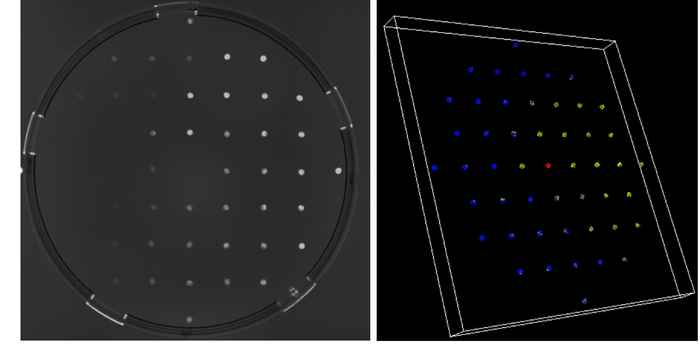1.3 Convection and the extracellular matrix dictate inter- and intra-biofilm quorum sensing communication in environmental systems
Tan, C. H., Oh, H. S., Sheraton, V. M., Mancini, E., Joachim Loo, S. C., Kjelleberg, S., ... & Rice, S. A. (2020)
Keywords: Quorum quenching, Convection-diffusion, Enzyme kinematics, Escherichia coli, Hydrogel matrix
Anthor Vivek Sheraton M. on the article
Microbial colonies/biofilms communicate among the individuals using Quorum sensing (QS). QS controls the social behaviour that dictates the fitness of microbial populations. QS is known to signal and guide the microbes to form dense colonies. While the genetics and regulatory pathways of QS were extensively studied, there lacks an understanding about the environmental factors that affect the signal and its response. Specifically, it is unclear how QS is achieved in species-rich, biofilm communities in nature. We developed an experimental and modelling approach to elucidate the behaviour of QS in the presence of quorum quenchers (QQ) and in different external environments. We found the pivotal factors that determined communication to be extracellular matrix (ECM), hydrodynamics and QQ.
The experimental design included spatial arrangement of signal producers, responders and quenchers in a suspension. The bacterial species used as signal producer and quenchers were Escherichia coli encoded with Esal and AiiO respectively. We developed an in-silico model to study the dynamics of signalling and quenching in response to varying environmental parameters. The model incorporated equations to represent the advection, diffusion and reaction kinetics of the system. Different sets of experiments were performed to tune the model parameters such as diffusivity constants and leakage of enzymes. The model was successfully validated against experimental findings.
ECM served as a medium to absorb and relay signal messengers into biofilm. Open systems are susceptible to convection-mediated dispersal of signal. Such a process promotes long range inter-biofilm communication even at weak signal concentration in ECM, which is a typical trait of natural environments. Within the biofilm, the matrix further dictates the transfer of QS signals and QQ enzymes through differential diffusion. Consequently, spatial segregation of the individual populations occurs resulting in highly heterogenous QS behaviour within multispecies biofilm communities. We observed that the activity of QQ and signal propagation was varied depending on the nature of surrounding matrix. In aqueous environments, QQ could release enzymes to wider extent than the thick hydrogel matrix. However, the threshold concentration of QQ required to neutralize QS may not be achieved due to the rapid dispersal of enzymes in the aqueous media. Our study revealed that QS signalling was controlled only by the extracellular QQ enzymes released through cell lysis.

Tan, C. H., Oh, H. S., Sheraton, V. M., Mancini, E., Joachim Loo, S. C., Kjelleberg, S., ... & Rice, S. A. (2020). Convection and the Extracellular Matrix Dictate Inter-and Intra-Biofilm Quorum Sensing Communication in Environmental Systems. Environmental science & technology, 54(11), 6730-6740.